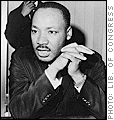
The Spirit of 76
Historic preservation is a funny business. As a nation, America has always been forward-looking and progressive, but at the same we citizens have strong and sentimental attachments to the past. Things change, new habits replace old favorites, but our embrace of an ever-improving future often conflicts with desires to maintain some continuity with the way things used to be.
The questions surrounding preservation of the past for future generations usually only make the news when a big battle rages, like when Disney wanted to build a theme park on the Civil War battlefields of Manassas, when WalMart’s bland mega-boxes threaten the livelihood of favorite local shops, or when homespun corner cafes can’t compete with deep-pocketed chains (“Friends don’t let Friends Drink Starbucks”, etc).
News-worthy or not, these issues pop up everywhere, whether it’s to do with saving Howard Johnson’s orange roofs back east, Stuckey’s in the Deep South or iconic 1950s “Googie” restuarants in Southern California. Sometimes a small and usually very vocal group manages to ride to the rescue of threatened landmarks, but, more often than not, the old favorites have faded away before we really begin to appreciate what we are losing. One of my favorite writers, the late great J.B. Jackson, wrote an essay he called “The Necessity for Ruins,” about how the value of the “old” is often only revealed after it’s extinct. However you look at it, it’s all very much as Joni Mitchell sang: “You don’t know what you got till it’s gone."
My musings of the importance of things past were set off by a recent news item a friend sent documenting a campaign against the mindless destruction of one of the cherished landmarks of my young life: the giant orange “Union 76” balls, spinning above the forecourt of my favorite gas stations. The Union 76 balls first arrived on planet Earth the same year I did, in 1962, for the World’s Fair in Seattle (when the landmark Space Needle, the Monorail and more also arrived on the scene).
{And just to add another layer of confusion to my digressions, these orange Union 76 balls also played a part in the creation of another car culture icon – antennae balls. (You know, those 2-inch styrofoam balls people put at the tip of their car antennaes…). Well, according to the semi-offical History of Antennae Balls, Union 76 created these car-toppers in 1967, so these balls are infinitely more significant than most people think.}
Anyway, to get back to the point: in this age of monopolizing mega-corporations, it seems that these eye-catchingly attractive symbols are simply too quirky to survive. Since 2002, when Union 76 (or Unocal) was swallowed up by the ConocoPhillips regime (which earlier absorbed another much-loved icon, the Phillips 66 brand), the Union 76 logo has been threatened with extinction. First the color scheme was sacrificed, as California orange gave way to Conoco red, and over the past few years almost all of the 18,000 or so big orange spinning balls have been replaced by flat rectangular red plastic signs.
Fortunately, the 76 balls saga may yet have something of a happy ending, thanks to a year-long petition campaign waged by admirers of the orange globes. Though most will be replaced, a few particularly prominent balls will be saved, and many of the others will be offered to museums and public collections.
Stay tuned!



